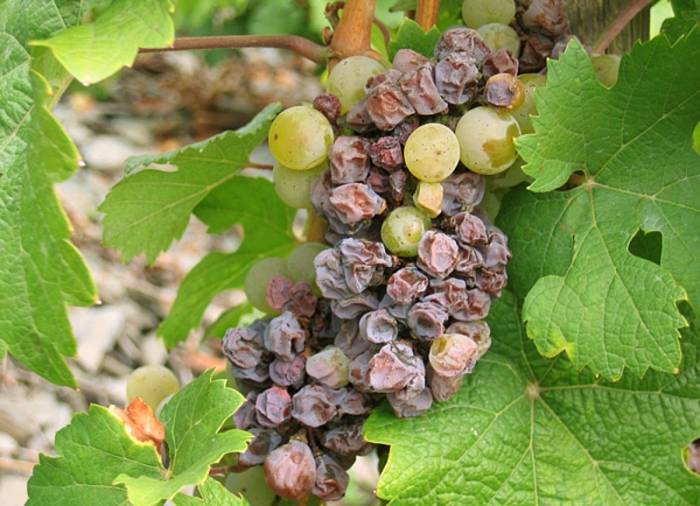Noble rot shapes the world’s most celebrated sweet wines through rare climatic conditions and centuries of tradition
Producers in Europe face climate threats as they continue crafting complex, age-worthy wines from botrytized grapes

In the world of fine wine, few phenomena are as intriguing as the development of noble rot, or botrytis cinerea. This fungus, under specific climatic conditions, transforms ordinary grapes into the foundation for some of the world’s most celebrated sweet wines. The process is unpredictable and rare, requiring a delicate balance of humidity and warmth. When these factors align, botrytis cinerea infects ripe grapes, causing them to dehydrate and concentrate their sugars and acids. The result is a wine with remarkable depth, complexity, and a unique balance between sweetness and acidity.
The origins of botrytized wines are difficult to pinpoint. One of the earliest documented cases comes from Schloss Johannisberg in Germany’s Rheingau region. In 1718, the Prince-Bishop of Fulda began controlling the harvest dates for local abbey vineyards. According to legend, in 1775, a crucial letter authorizing the harvest arrived two weeks late because the prince-bishop was away hunting. During this delay, the grapes became infected with botrytis. Instead of being ruined, these shriveled golden clusters produced a rich, amber-colored wine that set a new tradition for late harvests in the region.
However, evidence suggests that botrytis may have been harnessed even earlier. In Hungary’s Tokaji region in the early 17th century, Máté Szepsy Laczkó, a priest and winemaker in Erdőbénye, inadvertently discovered the potential of botrytized grapes after fleeing an impending Turkish invasion. Upon his return, he found his grapes infected with an unfamiliar mold. Rather than discard them, he pressed what remained and produced a honeyed wine with an extraordinary texture and balance. This became known as essencia. Szepsy Laczkó later blended this concentrated juice with previous vintages to create what is now called tokaji aszú.
Some records indicate that similar late-harvest wines were made as early as 1526 in Rust, Austria—a town still known for its sweet wines today. It is likely that botrytis cinerea existed in vineyards long before anyone understood or documented its effects.
Botrytis thrives only under very specific microclimates. The fungus lives in soil and plant debris but requires alternating periods of humidity and dryness to develop as noble rot rather than destructive gray rot. In places like Sauternes in France, cool morning mists from the Ciron River meet warmer air from the Garonne, creating ideal conditions for botrytis to flourish on ripe grapes each autumn. Similar environments exist in Tokaji at the confluence of the Bodrog and Tisza rivers and in certain valleys along the Loire and Moselle.
As climate change alters weather patterns and river temperatures rise, these delicate conditions are increasingly threatened. Drier autumns can reduce the frequency of great botrytized vintages. In regions like Switzerland’s Valais or France’s Alsace, production is now more sporadic and dependent on favorable years.
The impact of noble rot on grapes is dramatic. As botrytis infects berries, they change color from gold to violet and lose water through evaporation. This concentrates sugars, acids, and minerals—creating wines with both richness and freshness. The fungus also triggers chemical changes that enhance aromatic compounds responsible for notes of citrus peel, coconut, caramel, candied fruit, honey, honeysuckle, and floral tones.
Grape variety plays a significant role in how these flavors express themselves. Riesling, chenin blanc, and Hungary’s furmint retain high acidity even as sugars rise; this helps balance sweetness with vibrancy. Sémillon and sauvignon blanc-based wines from Sauternes tend toward a different profile but can achieve remarkable harmony between sugar and bitterness.
Producing botrytized wines is labor-intensive and risky. Grapes must remain healthy until fully ripe before infection sets in; too much fungal growth can ruin quality. Harvesters must carefully select only perfectly affected berries—often requiring multiple passes through each vineyard row over several weeks.
Pressing these shriveled grapes yields little juice but immense concentration. Fermentation is slow because high sugar levels stress yeast populations; some batches take months or even years to complete fermentation. For example, tokaji essencia may contain over 500 grams of residual sugar per liter but only 2–4% alcohol by volume.
Winemakers must also guard against spoilage during aging. Botrytized wines are prone to oxidation and microbial contamination; higher doses of sulfur dioxide are often used to protect them compared to dry wines.
Despite these challenges—and perhaps because of them—botrytized wines remain among the most prized in the world. Producers in Sauternes continue their work despite threats from climate change and infrastructure projects like high-speed rail lines that could disrupt local microclimates. In Hungary’s Tokaji region, Austria’s Burgenland, Germany’s Mosel and Saar valleys, France’s Loire Valley and Alsace, and Switzerland’s Valais region, winemakers persist in crafting these rare nectars when nature allows.
Noble rot remains both an exception and a treasure—a testament to patience and skill in both vineyard and cellar. The greatest examples are not just sweet but complex and enduring—wines that can age for decades or even centuries while retaining their character. For many wine lovers around the world, they represent one of nature’s most remarkable gifts to gastronomy.
Founded in 2007, Vinetur® is a registered trademark of VGSC S.L. with a long history in the wine industry.
VGSC, S.L. with VAT number B70255591 is a spanish company legally registered in the Commercial Register of the city of Santiago de Compostela, with registration number: Bulletin 181, Reference 356049 in Volume 13, Page 107, Section 6, Sheet 45028, Entry 2.
Email: [email protected]
Headquarters and offices located in Vilagarcia de Arousa, Spain.